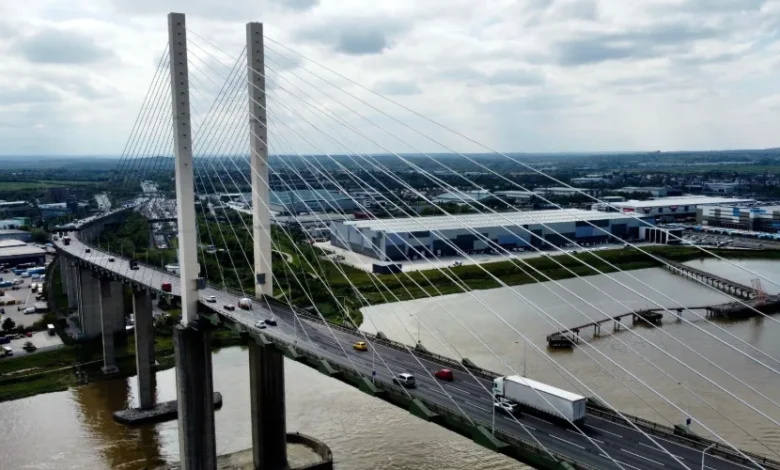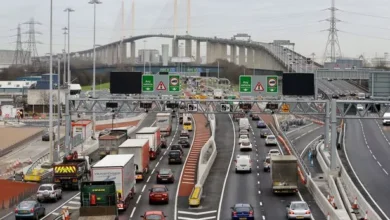Dartford Crossing: Everything You Need to Know About This Iconic UK Route

The Dartford Crossing is more than just a bridge and tunnel system—it’s a crucial part of the UK’s road network, connecting Kent and Essex and carrying over 180,000 vehicles daily across the River Thames. For locals, commuters, and long-distance hauliers, the Dartford Crossing plays an essential role in travel efficiency and economic activity in the southeast of England. But it’s also a source of ongoing debate, from toll charges and traffic delays to future plans and environmental concerns.
In this comprehensive guide, we’ll take you through the history, structure, challenges, and significance of the Dartford Crossing—plus what the future holds for this major transportation artery.
History of the Dartford Crossing
Early Vision and the First Tunnel
The need for a crossing over the Thames east of London was first proposed in the 1920s. With growing car ownership and commercial trade, a reliable route between Kent and Essex was essential. However, the first real move came much later, and the first tunnel of the Dartford Crossing opened in 1963.
This tunnel was designed for single-lane traffic in each direction and quickly became insufficient due to rising traffic volumes. A second tunnel was added in 1980, creating a more functional dual-carriageway tunnel system beneath the Thames.
The QEII Bridge
As the need continued to grow, the idea of a bridge emerged. In 1991, the Queen Elizabeth II Bridge (often shortened to QEII Bridge) was inaugurated. This magnificent cable-stayed bridge allowed southbound traffic to cross above the river, while both tunnels were repurposed for northbound traffic. This combination significantly increased the crossing’s capacity.
How the Dartford Crossing Works Today
Layout and Function
Today, the Dartford Crossing includes:
- Two tunnels for northbound traffic (Essex-bound)
- The QEII Bridge for southbound traffic (Kent-bound)
It forms part of the M25 orbital motorway, making it a critical part of the London commuter belt and a key link for freight transport to and from the Channel ports.
Dart Charge System
In 2014, the Dart Charge replaced toll booths at the crossing with an automated payment system to reduce congestion. Drivers must now pay online or through automatic billing systems. Failure to pay the Dart Charge can result in heavy fines.
As of the latest rates:
- Cars: £2.50 per crossing
- Two-axle goods vehicles: £3.00
- Multi-axle HGVs: £6.00
Exemptions apply to certain local residents and electric vehicles. However, it’s vital for occasional users and visitors to register and pay on time to avoid penalties.
Importance of the Dartford Crossing
Economic Significance
The Dartford Crossing is a lifeline for businesses moving goods between mainland Europe, the ports of Dover and Felixstowe, and the rest of the UK. Thousands of lorries use this crossing daily, transporting food, fuel, and industrial supplies.
Commuter Convenience
For commuters in Kent and Essex, especially those working in London or nearby hubs, the crossing offers a direct, relatively quick route across the river compared to central London bridges or ferry alternatives.
Strategic Infrastructure
Due to its role in the Trans-European Transport Network (TEN-T), the Dartford Crossing is vital for international logistics and long-distance transport. It’s also a designated diversion route when other Thames crossings are closed.
Dartford Crossing: The Ongoing Challenges
Traffic Congestion
Despite improvements, the crossing is often congested—especially during peak hours. With over 180,000 vehicles using it each day, it operates well beyond its intended capacity.
Incidents, maintenance work, or weather-related restrictions on the bridge (especially high winds) frequently cause long tailbacks, sometimes stretching miles on either side.
Pollution and Environmental Concerns
Heavy traffic also means high emissions. The Dartford Crossing area regularly records poor air quality levels. Environmental groups have raised concerns about the health impact on nearby communities, especially in Dartford and Thurrock.
Efforts are underway to encourage the use of electric vehicles and improve air quality, but progress is slow given the crossing’s importance.
Payment Penalties
The Dart Charge system is efficient but not without criticism. Visitors unfamiliar with the system often miss the payment deadline and face hefty fines. There’s also limited support for those without internet access or banking facilities, making the system seem inaccessible to some.
Future of the Dartford Crossing
Lower Thames Crossing
To relieve pressure on the Dartford Crossing, plans for a Lower Thames Crossing have been in motion for several years. This new crossing would be built further east, connecting Kent (near Gravesend) to Essex (near Tilbury).
Key features of the proposed Lower Thames Crossing include:
- 14.3-mile dual carriageway
- Britain’s longest road tunnel
- Two lanes in each direction
- Reduced congestion on M25
Once complete, the Lower Thames Crossing is expected to reduce Dartford Crossing traffic by 20%, improving journey times and local air quality.
Smart Technology Integration
There are also ongoing plans to upgrade the existing Dartford Crossing with smart traffic management systems, real-time updates, and AI-driven analytics. These would help manage flows more efficiently, especially during accidents or disruptions.
Local Community Impact
Advantages
- Better connectivity boosts local economies in Dartford, Thurrock, and surrounding towns.
- Property values have increased due to improved accessibility.
- Residents benefit from fast travel options across the Thames.
Disadvantages
- Persistent noise and air pollution affect quality of life.
- Roadworks and traffic delays impact daily routines.
- High toll charges are a burden for regular commuters without exemption.
Community engagement efforts are ongoing, but many locals feel their concerns are often secondary to economic interests.
Lesser-Known Facts About the Dartford Crossing
- Wind Restrictions: The QEII Bridge is sometimes closed to high-sided vehicles during strong winds, causing major delays.
- Escape Tunnels: Both tunnels have safety walkways and escape tunnels for emergencies.
- Toll Legacy: Originally, tolls were supposed to be lifted once the construction cost was covered. However, they’ve remained in place as a congestion control measure.
- Military Use: During wartime planning, alternative Thames crossings including Dartford were reviewed for evacuation and logistics scenarios.
The Dartford Crossing in the Eyes of Drivers
Ask any daily user, and you’ll likely hear a mix of frustration and appreciation. Yes, it’s often backed up. Yes, the Dart Charge system can be unforgiving. But without it, journeys would take far longer, and logistics would suffer immensely.
For many, the Dartford Crossing is a necessary evil—indispensable but far from perfect. And until the Lower Thames Crossing becomes a reality, this critical link will remain under pressure.
Conclusion
The Dartford Crossing is much more than a bridge and tunnel. It’s a living, evolving symbol of Britain’s transport infrastructure. As traffic increases and environmental challenges grow, its role is both vital and vulnerable.
While it continues to support commerce, commuters, and cross-country logistics, it also represents a call to innovate, modernize, and reimagine how we travel across natural boundaries like the Thames. The next decade could bring significant change—not just for the Dartford Crossing but for transport across the UK.
Whether you’re planning a trip, a daily commuter, or simply curious about British roadways, understanding the Dartford Crossing offers insights into the complexities and necessities of modern infrastructure.
FAQs
1. How do I pay the Dart Charge?
You can pay online through the official Dart Charge website, set up an account for automatic billing, or use Payzone payment points.
2. Is the Dartford Crossing free at night?
Yes, the crossing is free between 10 p.m. and 6 a.m. daily.
3. What happens if I don’t pay the Dart Charge?
You’ll receive a penalty charge notice (PCN) of up to £70, reduced to £35 if paid within 14 days.
4. Can electric vehicles use the crossing for free?
Yes, fully electric vehicles are exempt from the Dart Charge, but you must register for the exemption in advance.
5. When will the Lower Thames Crossing be completed?
The construction is expected to begin by 2026, with completion aimed for the early 2030s, subject to planning approvals and funding.





